Introduction
In the world of 3D printing, the Creality Ender 3 V3 series, is set to revolutionize the field of 3D printing, and we’re here to explain why.
Ender-3 V3 vs Ender-3 V3 KE vs Ender 3 V3 SE
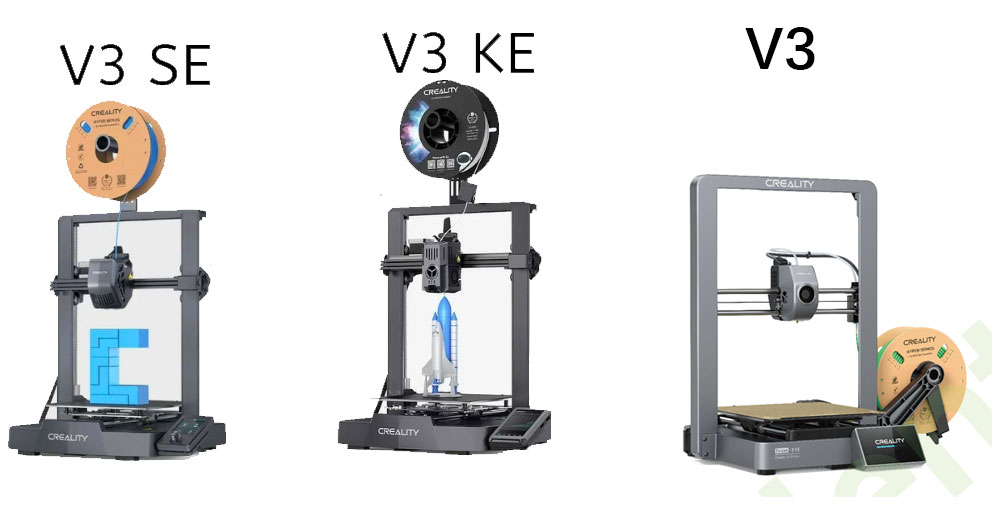
The Ender 3 V3 brings a host of compelling upgrades that set it apart from its predecessors, the Ender 3 V3 KE and V3 SE. This 3D printer is designed with the utmost precision and user-friendliness in mind. Have a quick look at the differences among V3, V3 KE and V3 SE:
| Model | Ender-3 V3 SE | Ender-3 V3 KE | Ender-3 V3 |
| Printing Technology | FDM | FDM | FDM |
| Build Volume | 220*220*250mm | 220*220*240mm | 220*220*250mm |
| Product Dimensions | 349*364*490mm | 433*366*490mm | 358*374*498mm |
| Package Dimensions | 575*390*235mm | 502*409*280mm | unknown |
| Net Weight(kg) | 7.12kg | 7.8kg | 7.83kg |
| Gross Weigh(kg) | 9.14kg | 9.9kg | unknown |
| Build Surface | PC Spring Steel | PEI Spring Steel | PEI flexible plate |
| Display Screen | 3.2” Color Knob Screen | 4.3″ color touchscreen | 4.3″ HD color touchscreen |
| Resume Printing | Yes | Yes | Yes |
| Filament Detector | No | Yes | Yes |
| Dual Z-axis | Yes | Yes | Yes |
| Leveling Mode | Auto | Auto | Auto |
| Mainboard | 32-bit | 32-bit | 32-bit |
| File Transfer | SD Card | USB drive, LAN, Creality Cloud APP | USB drive, LAN, Creality Cloud APP |
| Supported Filaments | PLA/PETG/TPU(95A) | PLA, PETG, ABS, TPU(95A), ASA | PLA, TPU,PETG, ABS, TPU, PLA-CF, PETG-CF, CR-Carbon |
| Heatbed Temperature | 100℃ | 100℃ | 110℃ |
| Nozzle Temperature | 260℃ | 300℃ | 300℃ |
| Rated Voltage | 100-120V~, 200-240V~, 50/60Hz | 100-120V~, 200-240V~, 50/60Hz | 100-120V~, 200-240V~, 50/60Hz |
| Voltage Base | 24V | 24V | 24V |
| Rated Power | 350W | 350W | 350W |
| Max. Printing Speed | 250mm/s * | 500mm/s | 600mm/s |
| Typical Printing Speed | 180mm/s | 300mm/s | unknown |
| Max. Acceleration | 2500mm/s² | 8000mm/s² | 20000mm/s² |
| Extruder Count | 1 | 1 | |
| Nozzle Diameter | 0.4mm (default) | 0.4mm (default) | 0.4mm (default) |
| Layer Heigh | 0.1-0.35mm | 0.1-0.35mm | 0.1-0.35mm |
| Printing Accuracy | ±0.1mm | ±0.1mm | ±0.1mm |
| Filament Diameter | 1.75mm | 1.75mm | |
| Formats for Slicing | STL/OBJ/3MF/AMF | STL/OBJ/3MF/AMF | STL/OBJ/3MF/AMF |
| Slicing Software | Creality Print, Cura, Simplify3D | Creality Print, Cura, Simplify3D | Creality Print, Cura, Simplify3D |
Differences in a nutshell
1. Controls and Firmware
Ender 3 V3: Advanced “Creality OS” firmware based on Klipper
Ender 3 V3 KE: Advanced “Creality OS” firmware based on Klipper
Ender 3 V3 SE: Standard firmware with a smaller screen and knob controller.
2. Print Speed
Ender 3 V3: CoreXZ, Advertised maximum speed of 600 mm/s
Ender 3 V3 KE: Advertised maximum speed of 500 mm/s, typical speed of 300 mm/s.
Ender 3 V3 SE: Advertised maximum speed of 250 mm/s, typical speed of 180 mm/s.
3. Hot End
Ender 3 V3: Capable of heating up to 300°C, featuring a more powerful 60W heater and a titanium alloy heat break.
Ender 3 V3 KE: Capable of heating up to 300°C, featuring a more powerful 60W heater and a bimetallic heartbreak.
Ender 3 V3 SE: Capable of heating up to 260°C, suitable for standard filaments.
4. Part Cooling
Ender 3 V3: Dual-part cooling fans for more even cooling.
Ender 3 V3 KE: Dual-part cooling fans for more even cooling.
Ender 3 V3 SE: Single-part cooling fan.
5. Bed
Ender 3 V3:Default PEI bed surface for smoother prints and easier part removal, hotbed heats up to 110℃
Ender 3 V3 KE: Default PEI bed surface for smoother prints and easier part removal, hotbed heats up to 100℃
Ender 3 V3 SE: Default PC spring steel bed surface, with an option to upgrade to PEI, hotbed heats up to 100℃
6. Size and Z-Axis Build Volume
Ender 3 V3: Same as the V3 SE
Ender 3 V3 KE: Slightly smaller Z-axis build volume (240 mm) compared to the SE (250 mm).
Ender 3 V3 SE: Smaller overall footprint compared to the KE.
7. Filament Runout Sensor
Ender 3 V3: Includes a filament runout sensor.
Ender 3 V3 KE: Includes a filament runout sensor.
Ender 3 V3 SE: Sensor available as an optional upgrade.
8. Screen
Ender 3 V3: 4.3inch HD color touch screen
Ender 3 V3 KE: 4.3inch color touch screen
Ender 3 V3 SE: Includes a 3.2inch knob screen
9. Structure and design
Ender 3 V3: CoreXZ, Integrated die-casting design of the gantry and the base for greater stability.
Ender 3 V3 KE: The gantry and base are separate.
Ender 3 V3 SE: The gantry and base are separate.
10. Nozzle
Ender 3 V3: Quick to Swap tri-metal nozzle.
Ender 3 V3 KE: regular Copper Alloy Nozzle
Ender 3 V3 SE: regular Copper Alloy Nozzle
Ender 3 V3 KE Key Features
X-axis Linear Rail, Ultra-smooth Motion
The X-axis linear rail of the Ender 3 V3 KE 3D printer is an outstanding feature, featuring a carriage slide with precision ball bearings, ensuring precise, stable, and virtually frictionless motion (0.04 friction coefficient*). Constructed from robust steel, it remains as good as new even after extended use. This feature not only provides exceptional printing accuracy but also ensures stability and ultra-smooth motion throughout the printing process. Whether you’re working on fine-detail prints or handling large-scale printing tasks, it effortlessly excels.
Smarter Firmware and Controller
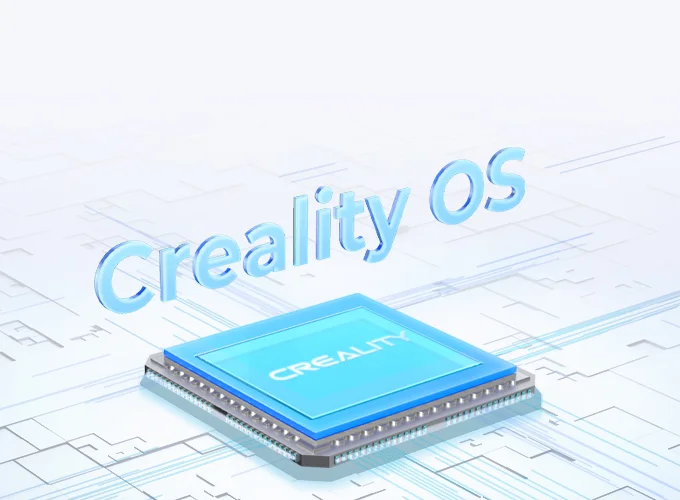
The Ender 3 V3 KE boasts significantly more advanced firmware than the Ender 3 V3 SE, with Creality referring to it as “Creality OS”. This firmware, built upon the open-source Klipper project, enables key features that enhance the overall user experience and print quality of the V3 KE.
One notable improvement is the implementation of smart algorithms, resulting in superior print quality. It effectively dampens the printer’s vibrations, reducing the occurrence of ringing or ghosting on printed objects. Additionally, the motion advance feature optimizes filament flow, minimizing issues such as blobs and oozing during the printing process.
When it comes to the user interface, the KE stands out with its 4.3″ touchscreen controller, which we find preferable to the Ender 3 V3 SE’s smaller 3.2″ screen and knob controller. While both printers offer clean and informative interfaces, the KE takes the lead in displaying a greater amount of information more clearly, thanks to its advanced firmware.
Faster Printing Speed
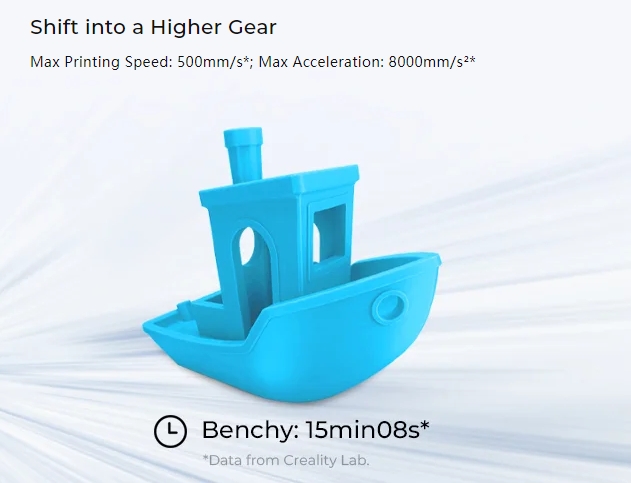
The Ender 3 V3 KE boasts an impressive maximum print speed when compared to the Ender 3 V3 SE. The KE offers a maximum printing speed of 500 mm/s and a typical speed of 300 mm/s, while the SE advertises a maximum print speed of 250 mm/s and a typical speed of 180 mm/s. It’s important to note that while maximum print speeds can be ambitious and might lead to more printing imperfections, typical print speeds are generally more reliable. We conducted tests at the SE’s typical 180 mm/s print speed and achieved prints of exceptional quality. So, while regularly hitting 500 mm/s with the KE may not be common, it undeniably outpaces the SE in terms of speed.
The KE achieves its higher speeds through a combination of firmware and hardware enhancements. As discussed in the firmware section above, the Ender 3 V3 KE utilizes a more advanced Klipper-based firmware, featuring functions that mitigate print defects when operating at high speeds. Moreover, the KE employs a linear rail for the X-axis, which minimizes vibrations and enables smoother carriage movement along the axis at high speeds. In contrast, the SE utilizes a conventional rubber wheel system for the X-axis.
In summary, if you require higher printing speeds and faster printing acceleration, the Ender-3 V3 KE may be the better choice. However, the specific choice should also consider other factors such as the type of printing materials, printing quality requirements, and budget. Different applications may require different printer performance characteristics.
Superior Hotend Support More Filaments
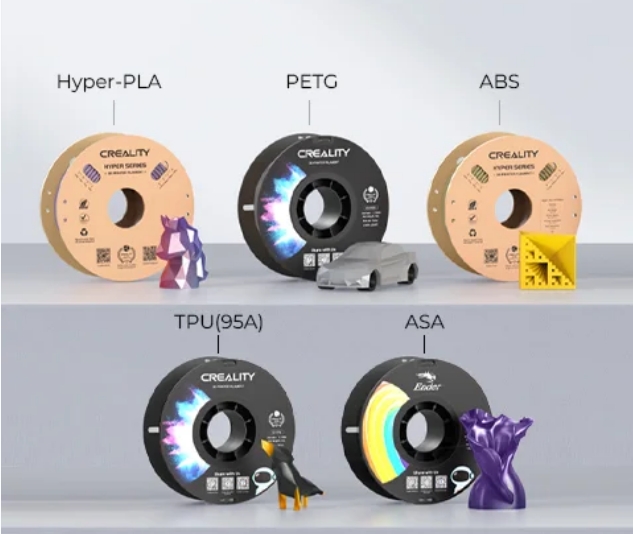
The hotel in the Ender-3 V3 SE offers solid performance with a nozzle temperature limit of up to 260°C, along with a heated temperature limit of 100°C. This allows it to effectively print a variety of standard filaments including PLA, ABS, PETG, and TPU. However, it may not be suitable for high-temperature materials like nylon due to its lower temperature capability.
In contrast, the Ender-3 V3 KE features a substantially upgraded hotend, designed to meet more challenging printing requirements. It boasts a powerful 60W ceramic heater, a considerable increase from the 40W heater in the SE, which aids in efficient filament melting, especially for high-speed printing. The KE’s hot-end incorporates a bimetallic heatbreak, a technology known for reducing the risk of hot-end jams, even though these printers are generally less prone to such issues because of their Sprite direct-drive extruders.
What truly sets the KE apart is its ability to reach higher nozzle temperatures, up to 300°C, opening the door to high-temperature filaments like nylon. Additionally, the KE’s “volcano” style hotend design provides a larger heat zone, ensuring quicker filament heating, a key factor for high-speed printing.
For most users, the standard filament compatibility on either machine, such as PLA, should suffice. However, the Ender-3 V3 KE provides the added advantage of handling high-temperature filaments, offering a wider range of possibilities for 3D printing enthusiasts looking to explore various materials and applications.
More Ways of Printing
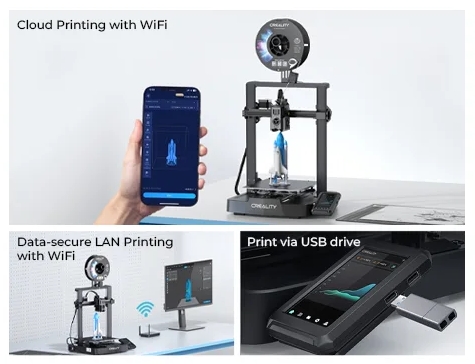
The Ender-3 V3 KE 3D Printer offers users three convenient ways to streamline their 3D printing experience. With this printer, you can take advantage of its versatile connectivity options:
USB Drive Printing: The printer allows you to print your 3D models via a USB drive. Simply load your .gcode files onto a USB drive and plug it into the printer. This straightforward method simplifies the process, eliminating the need for constant back-and-forth with your computer.
Data-Secure LAN Printing with WiFi: The Ender-3 V3 KE comes equipped with WiFi connectivity, which opens up new possibilities. You can securely connect your printer to your local network and control it remotely. This feature provides peace of mind for monitoring and managing your prints, all while maintaining data security.
Cloud Printing with WiFi: By leveraging the WiFi capabilities, you can also utilize cloud printing. This means you can access your printer and manage your 3D printing projects from your smartphone or computer via the cloud. The convenience of this feature is enhanced by the ability to load .gcode files wirelessly, eliminating the need for SD cards or USB cables.
Additionally, the printer supports a USB webcam, allowing you to keep an eye on your prints even when you’re not in the same room. These added features may not be essential for 3D printing, but they certainly enhance the overall user experience. Loading files over WiFi, in particular, simplifies one of the common inconveniences associated with 3D printing, making the process more user-friendly and efficient.
Other Features You May Want to Know
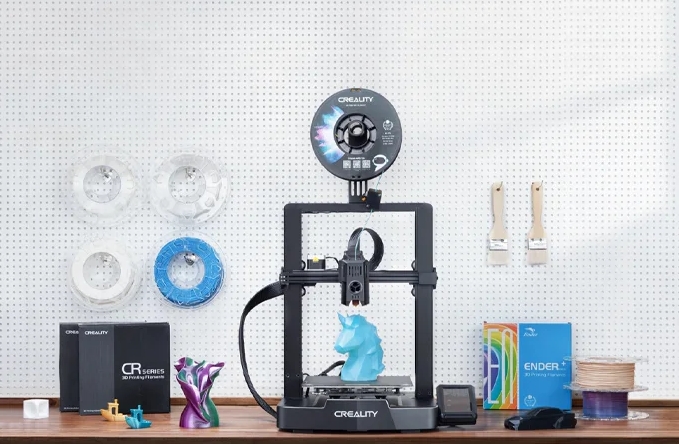
Double Fans for Rapid Model Cooling
The V3 KE features dual fans for rapid model cooling, with each side of the printhead equipped with a model cooling fan. These fans work in unison to provide quick and even cooling to each freshly printed section, preventing overheating and enhancing structural strength, thereby improving print quality and expediting the printing process, especially for larger or complex designs.
Get Started with Printing Effortlessly
The Ender 3 V3 KE 3D printer is designed for a seamless and user-friendly experience. Its quick assembly, one-tap self-test, and auto filament loading make setting up a breeze. With hands-free auto-leveling, leveling your print bed is a hassle-free process.
Conclusion
The Ender 3 V3 series is poised to be a perfect choice in the 3D printing community, offering improved performance, a quiet printing experience, and the high-quality results Creality is known for. Don’t miss out on this opportunity to take your 3D printing projects to the next level with the V3 series.









